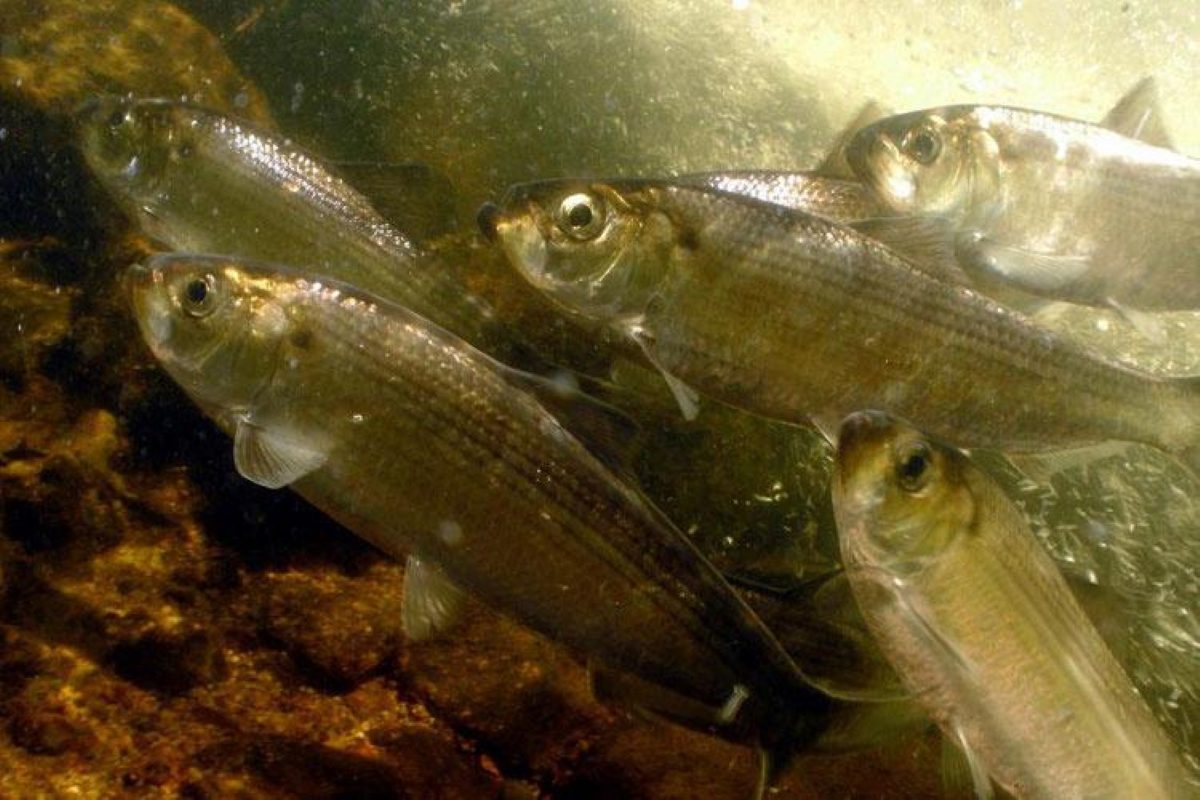
A state transportation project to remove an old culvert over a Chowan County creek and replace it with one that will allow river herring to reach important spawning ground is being funded by a first-of-its-kind federal grant.
A decades’ old culvert over Pembroke Creek in Edenton will be replaced with a larger, prefabricated aluminum box culvert. The new culvert will allow in more light, which fish prefer, and space for alewife and blueback herring that swim upstream each spring from the Atlantic Ocean to spawn before returning to the sea.
Supporter Spotlight
The most recent Atlantic coastwide stock assessment of river herring indicates that the fish remain depleted and at near historic lows.
Culvert replacement at the creek on Hickory Fork Road will open access to at least 1.5 more miles of habitat to river herring.
This was the only road/fish passage improvement project awarded out of six North Carolina Department of Transportation officials submitted for a shot at a Federal Highway Administration Aquatic Organism Passage grant.
The fact that North Carolina was awarded $472,000 from the same grant being sought out by states like Alaska and those in the Northwest and Northeast that are home to big salmon areas and large native tribes is a pretty remarkable feat, state officials say.
“The fact that we got one was great,” DOT Senior Project Manager Colin Mellor said.
Supporter Spotlight
The grant is part of the $1.2 trillion 2021 Bipartisan Infrastructure Law, the nation’s largest federal investment in public transportation. More than $2 billion is earmarked for improving fish passages throughout the country.
In all, 10 states and 14 tribal governments in the west from Washington, Oregon and California to Idaho and east to Maine, Massachusetts, New Hampshire and Virginia, were awarded more than $195 million for 169 projects.
“For North Carolina to have a project that was awarded, that was a big deal and certainly it does speak to the value of our resources here in North Carolina,” said Travis Wilson, North Carolina Wildlife Resources Commission eastern DOT habitat conservation coordinator.
The chunk of funding awarded to North Carolina will cover the cost of one of a number of transportation projects targeting improvements for fish passage in rivers and creeks in the coastal plain.
“On the whole, whenever we adjust our water crossings, whenever we replace culverts or bridges or anything, we try to do the right thing, first of all hydraulically, so that the water moves, and then after that if we can make animal passage better we’ve tried to do that,” Mellor said. “Whenever we replace a culvert we’re always thinking about animal passage. This isn’t new to DOT. What’s new is that there’s funding specifically available for it.”
Transportation officials work hand-in-hand with state wildlife and fisheries officials in identifying projects that improve both a roadway, be it to replace an aging culvert or bridge, and waterways for anadromous fish and animal passage, including frogs and salamanders.
Pembroke Creek is in a watershed that flows into the Albemarle Sound, a large coastal estuary of forests, salt marshes, mudflats, dunes and beaches and submerged aquatic vegetation.

Commercial and recreational fishers are drawn to the sound for its abundance of fish, including striped bass, crappie, flounder, red drum, largemouth bass and weakfish.
The sound’s anadromous fish spawning areas span 10 counties in the northeast coastal region of the state.
And with larger obstructions like dams in big rivers typically getting more attention when it comes to the topic of improving anadromous fish passage, there are thousands of culvert barriers in smaller systems that need to be highlighted, Wilson said.
Holly White, a fisheries biologist with the state Division of Marine Fisheries, explained that culverts clogged with debris and culverts that are deteriorating effectively become little dams for river herring.
The population of river herring coastwide has been declining since the 1990s.
“While we can’t really quantify it, we know these culverts do have an impact because the fish can’t get to where they would primarily be spawning,” White said.
The division in 2008 began consistently conducting a river herring spawning area survey to identify spawning areas in tributaries of the Albemarle Sound.
The survey is conducted during migration and spawning season in the spring. The data collected from these surveys is used to determine areas affected by and in need of culvert replacement to aid in fish passage.
According to information White provided, most of the sampling stations are at road crossings such as culverts and bridges over tributaries.
White said in an email following a telephone interview that the site selection “highlights the data need for areas outside of the Albemarle Sound to document culvert impediments to anadromous organisms such as river herring.”
“I hope that this funding sparks the interest to research culverts in the Tar-Pamlico River, Neuse River, and Cape Fear River systems where passage by anadromous organisms is limited,” she wrote.
State agencies are already working in preparation for the next round of federal grant funding.








